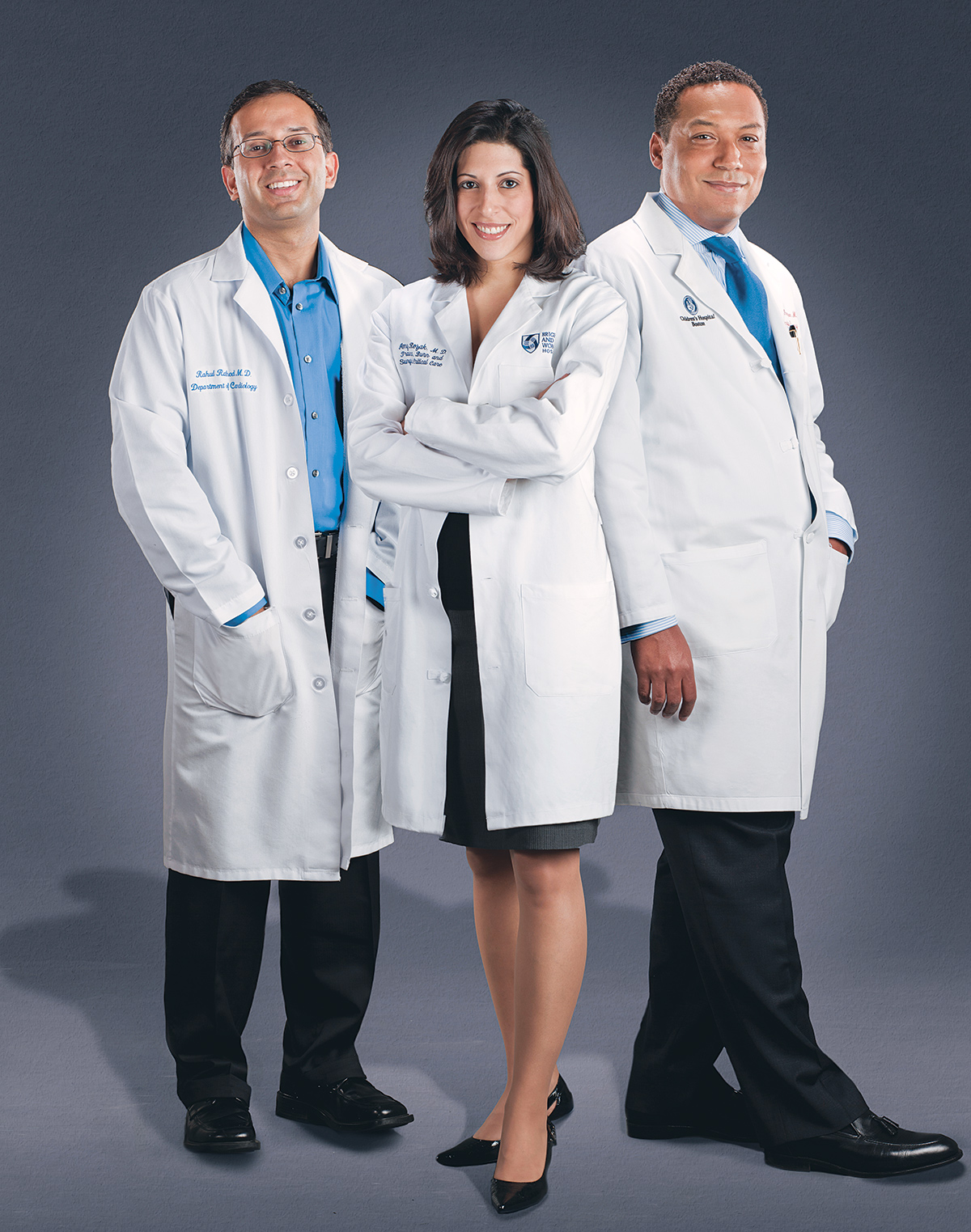Catching Up with the Stars of Boston Med
Interviews by Brittany Jasnoff and Shannon Fischer

Photograph by Matt Hoyle
JULIAN PRIBAZ
Plastic surgeon, Brigham and Women’s
On being part of the team of surgeons that performed the first face transplant in New England: One thing that people don’t always appreciate about that episode is that the patient [the face donor] had had a heart transplant, and that went very well. But then he had a stroke, and his brain was no longer functioning. What viewers don’t realize is that the heart went on to another recipient—that one heart lived in three different people!
MARIA TROULIS
Oral and maxillofacial surgeon, Mass General
On extracting a bullet from Framingham police officer Phillip Hurton’s face—with the camera rolling: I don’t know that it made any difference working on camera. In an academic teaching center—especially one as big as MGH—we’re used to being watched, because we have different nurses around every day, residents at different levels, and visiting professors and students. Now it’s not every day that people are taping us to be on TV…but by the end of it, I totally forgot they were there. The fact is, I’m not sitting there thinking, What am I going to say because I’m on camera? I’m thinking, How I am going to fix this patient’s face?
KIM PARKS
Transplant cardiologist, Mass General
On the family of her patient, Marvin, allowing filming—even in the worst of times: At every moment, they had an opportunity to say, “That’s enough; stop following us,” but I think they embraced the opportunity to share this experience and perhaps help other people. I think they saw this as something Marvin would have wanted as well. And the final moments weren’t filmed. They did say, “That’s enough” at one point.
RAHUL RATHOD
Pediatric cardiologist, Children’s Hospital
On how fictional hospital shows compare with real life—and Boston Med: At least to a happily married man, there seems to be a lot less sex in the real-world hospital. But obviously Boston Med was after something completely different; it sought to capture the real-world drama of medically complex patients. I think they did a good job depicting the story and emotions of having a baby with heart disease. They obviously cut out a lot of important details and events to fit the story into 20 minutes, but in the end, they did get it right.
AMY REZAK
Trauma surgeon, Brigham and Women’s
On losing someone on the table: I see a lot of bad things every day—death, horrific accidents—and one of the ways that we cope is to keep moving on. But [the camera crew] made it difficult to do that. They did stop you; they’d ask, “How do you feel about what just happened?” Suddenly you’re standing there and you’re like, Oh my God, that person actually had a family—and that was hard. I’m glad they didn’t follow us when we spoke with the family. That family was coming in from a different hospital, and they were told he was okay—just a minor trauma. I was going in there to tell them what had really happened in surgery.
FRANCIS FYNN-THOMPSON
Pediatric cardiac surgeon, Children’s Hospital
On the filming of young patients: I was concerned about that, and I was concerned about how parents of really young children might perceive being on camera. We specifically sought out a patient we knew would be able to give consent…but just as important, we wanted someone who would be able to communicate his or her experience. Sara Dumas, the person I transplanted, was perfect, because she was such an articulate young woman and was able to really communicate what her experience was like, dealing with having a life limited by her heart failure. She was also able to articulate what life was like after she got her new heart.